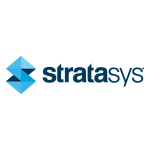NIDEK Technologies Accelerates Clinical Trial Evaluations of Vision Diagnostic Systems with Stratasys Multi-Material 3D Printing
Prototyping costs reduced by 75% and development cycles accelerated
by 50%, enabling rapid time-to-market
Video:
Using Stratasys’ Objet500 Connex3 Multi-material, Color 3D Printer,
NIDEK Technologies is 3D printing engineered prototyping materials that
match the performance of metal counterparts
MINNEAPOLIS & REHOVOT, Israel–(BUSINESS WIRE)–Stratasys
Ltd. (Nasdaq:SSYS), the 3D printing and additive manufacturing
solutions company, today announced that Italian-based NIDEK
Technologies, one of the world’s largest producer of surgical eye
equipment, is using a Stratasys
Objet500 Connex3 Multi-material, Color 3D Printer to accelerate
clinical trial evaluations of its ophthalmological devices (vision
diagnostic systems). The R&D division has reported a 75% reduction in
prototyping costs, while cutting lead times by 50% compared to its
previous methods.
According to Cesare Tanassi, Managing Director at NIDEK Technologies,
the adoption of multi-material 3D printing is transforming the
division’s prototyping process. The team is now able to use advanced 3D
printed materials to produce parts that directly replicate the final
components. This provides the opportunity to quickly and comprehensively
evaluate the fit, form and function of prototype devices and speed up
time-to-market.
Optimizing development cycles with 3D printing
Located in
Padova, Italy, NIDEK Technologies develops technology for vision
diagnostic systems. With products having direct contact with patients,
it is crucial that the division produces fully-functional prototypes
that precisely replicate the final product.
“Our prototyping process has become much more accurate and streamlined
since incorporating Stratasys 3D printing into our workflow,” says
Tanassi. “Previously we were constrained by the prototyping restrictions
associated with traditional methods. This proved costly in terms of
lead-times and capital, particularly with molds and CNC machining. We
found that we had limited flexibility over our prototypes and, should
iterations be required, this resulted in escalating costs.
“3D printing overcomes these bottlenecks by permitting us to quickly
validate designs before entering our prototypes into clinical trial
validation. As you can imagine, fully verifying our products is crucial
to ensuring that premium quality is maintained,” he continues.
Replacing metal parts with durable engineered photopolymers
Throughout
its development cycle the division exchanges expensive and cumbersome
metal components with tough, engineered 3D printed parts. These include
components of a working Gonioscope® (a system designed to observe the
space between the iris and cornea) and a micro perimeter (a device used
to determine the level of light perceived by specific areas of the
retina).
According to Tanassi, the ability to incorporate 3D printed materials
that match the performance of their metal counterparts is crucial to
accelerating the development cycle for clinical trial evaluation. He
explains: “In the case of the Gonioscope®, utilizing the toughness,
flexibility and snap-fit characteristics of the Stratasys Rigur 3D
printing material, we replaced several aluminum parts with a single 3D
printed component. This saw the device pass a year-long clinical trial
where eight global medical centers examined it.”
Fully-functional prototypes down from two months to just 24 hours
These
prototyping benefits are felt across the board as Federico Carraro,
Mechanical Division Manager at NIDEK Technologies, highlights:
“Previously we used metal fabrication when developing the micro
perimeter, which took around two months. With our Objet500 Connex3 3D
Printer, we can combine a wide range of 3D printed materials with
contrasting mechanical characteristics. This allows us to accurately
emulate final parts, including threads, seals, rubber and transparent
components. In this case, we achieved the same functional result within
24 hours by replacing metal parts with robust 3D printed components.”
“NIDEK Technologies is a prime example of how a growing number of
manufacturers are maximizing the full potential of 3D printing to
quickly and cost-effectively deliver fully-operational prototypes with
the precision and endurance of the final product,” says Giuseppe Cilia,
Stratasys Italian Sales Manager. “In the fast-paced medical device
industry, the ability to rapidly certify products is crucial to
improving the quality of care, and in this case, save someone’s vision.”
To learn more about how NIDEK Technologies is using advanced
multi-material 3D printing to accelerate clinical trial evaluation of
its devices, please watch this video.
For nearly 30 years, Stratasys
Ltd. (NASDAQ:SSYS) has been a defining force and dominant
player in 3D printing and additive manufacturing – shaping the way
things are made. Headquartered in Minneapolis, Minnesota and Rehovot,
Israel, the company empowers customers across a broad range of vertical
markets by enabling new paradigms for design and manufacturing. The
company’s solutions provide customers with unmatched design freedom and
manufacturing flexibility – reducing time-to-market and lowering
development costs, while improving designs and communications. Stratasys
subsidiaries include MakerBot and Solidscape, and the Stratasys
ecosystem includes 3D printers for prototyping and production; a wide
range of 3D printing materials; parts on-demand via Stratasys Direct
Manufacturing; strategic consulting and professional services; and the
Thingiverse and GrabCAD communities with over 2 million 3D printable
files for free designs. With more than 2,700 employees and 1,200 granted
or pending additive manufacturing patents, Stratasys has received more
than 30 technology and leadership awards. Visit us online at: www.stratasys.com
or http://blog.stratasys.com/,
and follow us on LinkedIn.
Stratasys, Stratasys signet logo, Connex and PolyJet are trademarks or
registered trademarks of Stratasys Ltd. and/or its subsidiaries or
affiliates.
Attention Editors, if you publish reader-contact information, please use:
- USA 1-877-489-9449
- Europe/Middle East/Africa +49-7229-7772-0
- Asia Pacific +852 3944-8888
Contacts
Stratasys Media Contacts
Stratasys
Arita
Mattsoff, +972 74 745 4000 (IL)
[email protected]
or
Joe
Hiemenz, +1 952-906-2726 (US)
[email protected]
or
North
America
Craig Librett, +1 518-424-2497
[email protected]
or
Europe
Jonathan
Wake / Miguel Afonso, +44 1737 215200
Incus Media
[email protected]
or
Asia
Pacific & Greater China
Stratasys AP
Janice Lai, +852
3944 8888
[email protected]
or
Japan
Stratasys
Japan
Aya Yoshizawa, +81 90 6473 1812
[email protected]
or
Korea
Stratasys
Korea
Jihyun Lee, +82 2 2046 2287
[email protected]
or
Mexico,
Central America, Caribe and South America
Stratasys Mexico
Yair
Canedo, +52 55 4169 4181
[email protected]
or
Brazil
Clezia
Martins Gomes, +55 (11) 3129 5158
GPCOM
[email protected]










